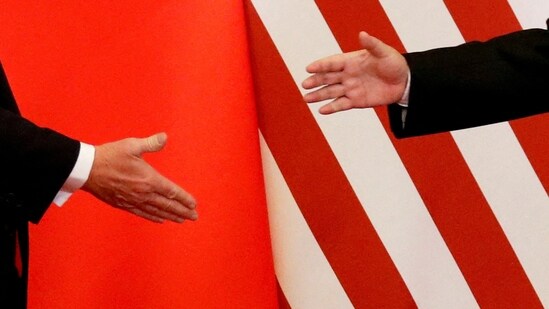Chinese and U.S. trade negotiators have prepared several diplomatic wins for Presidents Donald Trump and Xi Jinping to showcase at a summit this week. While these short-term agreements have boosted investor confidence, analysts warn that the deeper, structural conflicts between the world’s two largest economies remain unresolved.
OpenAI Reveals Data on ChatGPT Users Exhibiting Psychosis or Suicidal Thoughts
A Temporary Trade Relief for Global Markets
President Donald Trump expressed optimism about a deal with China, saying, “I really feel good” about the progress after officials unveiled new agreements over the weekend in Malaysia. The proposed deal is expected to see China resume soybean purchases—especially benefiting key Republican states—while the U.S. rolls back its recent 100% tariff threat. In exchange, Washington hopes to secure Beijing’s cooperation on rare-earth magnet exports, crucial for American manufacturing. Markets reacted positively, with the MSCI global stock index reaching near-record highs. Yet experts caution that these “easy wins” mask more complex, unresolved issues beneath the surface.
Experts Warn: Deeper Disputes Still Loom
Analysts highlight that the toughest challenges—such as national security concerns, technology competition, and industrial subsidies—remain untouched. “Picking the low-hanging fruit makes the path ahead tougher,” said Sun Chenghao, a fellow at Tsinghua University. “A true ‘grand deal’ requires confronting fundamental disagreements on state subsidies, tech competition, and national security.” Sun added that smaller, sector-specific deals may become the norm in the coming years, as both sides avoid larger confrontations.
Washington Pushes China to Rebalance Its Economy
U.S. Treasury Secretary Scott Bessent has urged China to shift toward a more consumer-driven economy. However, Beijing appears focused on manufacturing and technological self-reliance, as outlined in its new economic roadmap extending to 2030. This divergence underscores how far apart the two powers remain on key policy priorities.
Trump’s Asia Tour: Building Leverage Against Beijing
As Trump tours Asia, he has signed trade agreements with Thailand, Malaysia, and Cambodia, targeting rare earths and anti-dumping practices—key pressure points in his negotiations with China. The U.S. President’s meeting with Xi is set to take place in Busan, South Korea, marking their first direct talks since Trump’s return to power. Secretary of State Marco Rubio confirmed the meeting details during a call with Chinese Foreign Minister Wang Yi. Trump also hinted at reciprocal visits, with potential summits in Washington, Mar-a-Lago, or during upcoming global events like APEC 2026 in China and the G20 Summit in the U.S.
Rare Earths and Export Controls: The Battle Continues
The U.S.-China standoff over rare-earth minerals—essential for devices from smartphones to missiles—remains one of the most sensitive flashpoints. While Washington insists its export curbs are aimed at limiting China’s military advancements, Beijing continues to use its dominance in rare-earth production as leverage. Although Bessent suggested China might pause new export restrictions for a year, analysts remain skeptical. “China’s never going to give up its leverage on rare earths,” said Dexter Roberts of the Atlantic Council’s Global China Hub. “That would be sheer stupidity on their part.”
Limited Progress on Broader Trade and Security Issues
Despite minor progress on fentanyl-related tariffs, which could ease some pressure on Chinese exporters, fundamental disagreements persist. The investigation into China’s compliance with the Phase One trade deal from the earlier trade war also remains unresolved. Scott Kennedy, a senior adviser at the Center for Strategic and International Studies, summed it up: “They’ve focused on narrow, concrete issues while avoiding bigger questions about China’s economic system and national security. It’s unlikely those broader issues will ever be addressed head-on.”
Conclusion: A Fragile Pause, Not a Final Peace
The latest U.S.-China trade truce represents a temporary easing of tensions rather than a comprehensive resolution. While both sides celebrate short-term economic gains and stability, core issues such as technology competition, industrial policy, and national security remain flashpoints that could reignite future conflicts. As global markets cheer the current calm, the long-term relationship between Washington and Beijing remains on uncertain ground—marked by mutual mistrust and competing visions for global economic dominance.


1 thought on “US-China Trade Truce Leaves Core Economic Conflicts Unresolved”